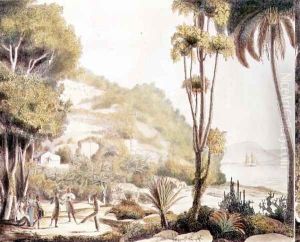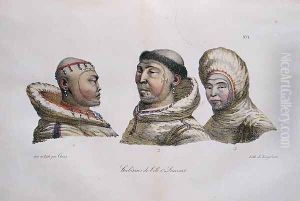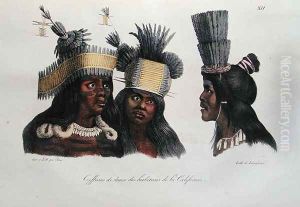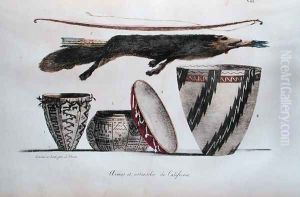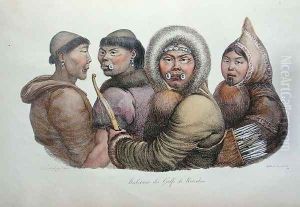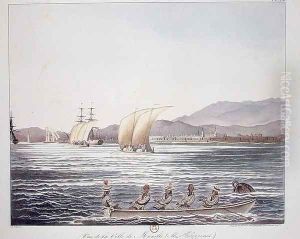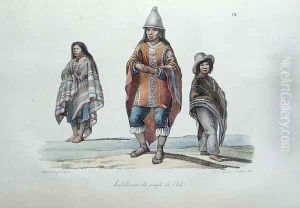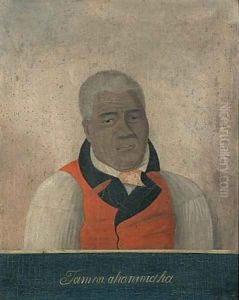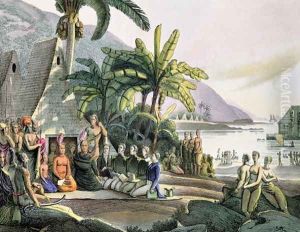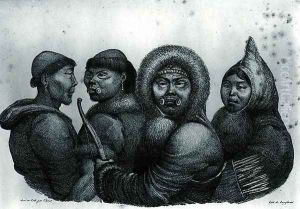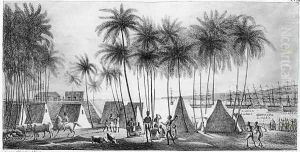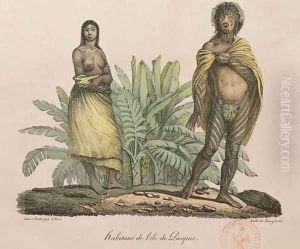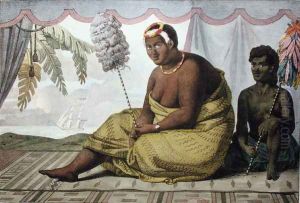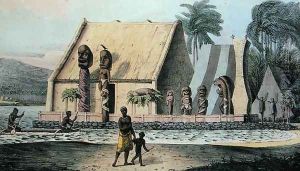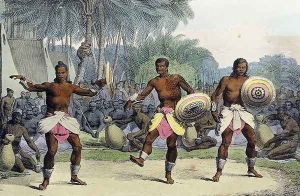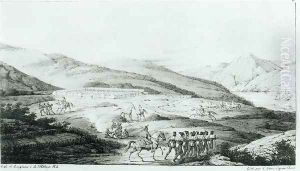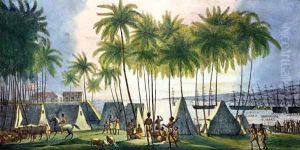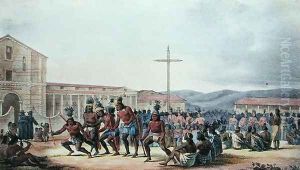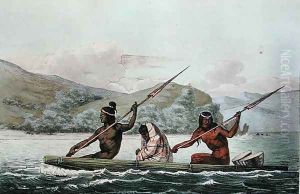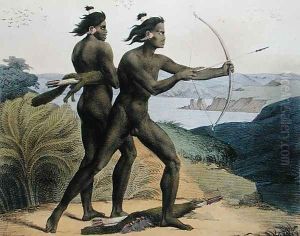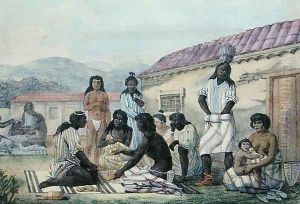Ludwig (Louis) Choris Paintings
Ludwig (Louis) Choris was a German-Russian painter and explorer known for his artistic work that documented the landscapes, indigenous peoples, and cultures encountered during early 19th-century scientific voyages. Born on March 22, 1795, in Yekaterinoslav (now Dnipro, Ukraine), then part of the Russian Empire, Choris exhibited a talent for drawing at an early age which led to his enrollment in the Imperial Academy of Arts in Saint Petersburg.
Choris is most famously associated with the Russian expedition around the world led by Otto von Kotzebue on the brig Rurik from 1815 to 1818. As the expedition's official artist, Choris was tasked with creating visual records of the places and peoples encountered during their voyage. His work during this journey was groundbreaking; he made numerous sketches and watercolors that were later published, offering a glimpse into the world's diversity to the European audience of the time.
The expedition took Choris to South America, the Pacific Islands, Alaska, California, and other exotic locales where he meticulously documented the flora, fauna, and native cultures. His attention to detail and the ethnographic quality of his illustrations made them valuable for both artistic and scientific communities.
Upon his return to Europe, Choris settled in Paris, where he continued to work on his drawings and paintings, many of which were included in the published account of Kotzebue's voyage. Tragically, his promising career was cut short when he became a victim of robbery and murder in Veracruz, Mexico, while embarking on another scientific expedition. He died on March 22, 1828, at the age of 33.
Choris's contributions to the visual documentation of early 19th-century explorations remain significant, and his works are preserved in various institutions around the world, including the J. Paul Getty Museum and the Honolulu Museum of Art. They continue to be appreciated for their artistic quality and as valuable historical records of the era's cultural and natural diversity.
